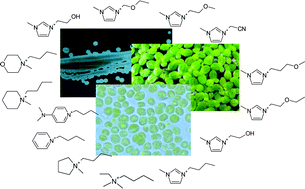Effects of different head groups and functionalised side chains on the aquatic toxicity of ionic liquids
Abstract
In this study, the influence of different head groups, functionalised

a
UFT - Centre for Environmental Research and Technology, Department 3: Bioorganic Chemistry, University of Bremen, Leobener Straße, D-28359 Bremen, Germany
E-mail:
stefan.stolte@uni-bremen.de
b UFT - Centre for Environmental Research and Technology, Department 10: Ecology, University of Bremen, Leobener Straße, D-28359 Bremen
c Merck KGaA, Performance and Life Science Chemicals, Frankfurter Straße 250, D-64293 Darmstadt, Germany
In this study, the influence of different head groups, functionalised

 Please wait while we load your content...
Something went wrong. Try again?
Please wait while we load your content...
Something went wrong. Try again?
S. Stolte, M. Matzke, J. Arning, A. Böschen, William-R. Pitner, U. Welz-Biermann, B. Jastorff and J. Ranke, Green Chem., 2007, 9, 1170 DOI: 10.1039/B711119C
To request permission to reproduce material from this article, please go to the Copyright Clearance Center request page.
If you are an author contributing to an RSC publication, you do not need to request permission provided correct acknowledgement is given.
If you are the author of this article, you do not need to request permission to reproduce figures and diagrams provided correct acknowledgement is given. If you want to reproduce the whole article in a third-party publication (excluding your thesis/dissertation for which permission is not required) please go to the Copyright Clearance Center request page.
Read more about how to correctly acknowledge RSC content.
 Fetching data from CrossRef.
Fetching data from CrossRef.
This may take some time to load.
Loading related content
